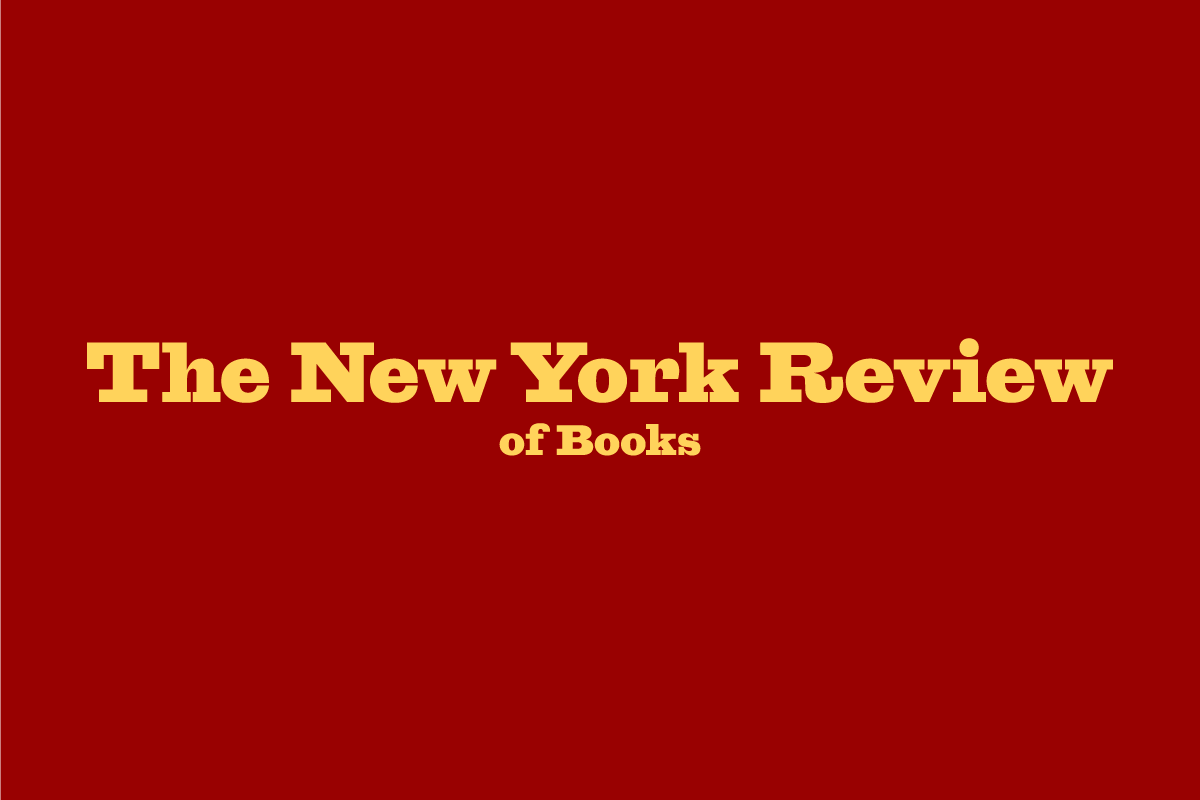Since Donald Trump was inaugurated on January 20, my days mostly look like this: I wake up and check my phone for the latest unprecedented executive action the Trump administration has announced. I do some research and try to figure out whether the action is lawful. (It usually isn’t.) I call colleagues who are experts in the area of law that’s being flouted—immigration, independent agencies, federal science funding, employment, free speech, and so on. I organize my thoughts and draft a short essay for my Bloomberg opinion column explaining what’s wrong with the action and why it matters. I almost always conclude by predicting what the courts will do when a lawsuit is filed. If some lower court has already ruled, I analyze what it said and whether the Supreme Court will uphold its ruling on appeal.
The principle that matters here is the rule of law. Trump is the elected president, and he has the democratically conferred authority to exercise the power of the office in keeping with his policy preferences, no matter how morally repugnant they are. What he does not have is the authority to exceed the constitutionally defined powers of the presidency. Put simply, his actions cannot violate the law.
The institution that matters here is the courts. As of this writing, Just Security’s litigation tracker lists 192 legal cases filed against the Trump administration, all but four of them active. In many, a federal district court has issued an initial order temporarily freezing or reversing a putatively illegal executive action. Several of these orders have been considered by the federal courts of appeal. Just six have made it to the Supreme Court and been decided. In the first of these, a district court held that the Trump administration could not refuse to pay money owed to contractors of the US Agency for International Development (USAID) for work already done.
In an unsigned 5–4 decision, the Court left the lower court’s ruling in place. Justice Samuel Alito, in dissent, pronounced himself “stunned” by the decision. He was joined by Justices Clarence Thomas and Neil Gorsuch, the other two archconservatives, and by Justice Brett Kavanaugh. In the majority were the court’s three liberals, Justices Elena Kagan, Sonia Sotomayor, and Ketanji Brown Jackson; Chief Justice John Roberts; and the justice who now holds the powerful position of being at the ideological center of the Court, Amy Coney Barrett.
Barrett, a protégée and former law clerk of the late justice Antonin Scalia, is not a moderate centrist like the late justice Sandra Day O’Connor or a would-be philosopher of dignity like the retired justice Anthony Kennedy. She is a deeply conservative textualist and originalist. She is also, as the evidence of her four years on the Court shows, genuinely committed to the rule of law. In the recent executive order cases that have made it to the Court she has sometimes voted with the liberals (as in a case challenging the deportation of alleged Venezuelan gang members) and sometimes with the conservatives (as in a case in which the Court overturned a lower-court order to the Trump administration to continue state education grants).
In theory, Congress has tools at its disposal to constrain executive branch overreach: hearings, legislation, oversight, the power of the purse. In practice, the current Republican-controlled Congress has shown little interest in exercising its authority over the Trump administration’s actions. The ultimate congressional sanction, impeachment and removal from office, now seems almost toothless. Twice during his first term Trump was impeached by the House, and twice the Senate failed to convict him. Both times the votes closely followed party lines.
This is where we are: the fate of the constitutional republic depends to a large degree on the courts. The decisive votes on many lower federal courts, as well as on the Supreme Court, lie with judges and justices appointed by Trump. In his first term, he outsourced many of his judicial nominations to the conservative Federalist Society, which, in its statement of purpose, maintains
that the state exists to preserve freedom, that the separation of governmental powers is central to our Constitution, and that it is emphatically the province and duty of the judiciary to say what the law is, not what it should be.
The strength of the conservative judiciary’s commitments to liberty, constitutionalism, and legality will now be tested as never before. If enough conservative judges and justices adhere to the Federalist Society’s stated principles, the republic will, I expect, survive Trump’s presidency. If the administration loses enough cases that matter, Trump and his supporters will surely come to regret his past reliance on the Federalist Society. The rest of us will have to acknowledge that we were lucky Trump didn’t pick his judges himself.
For liberals, the central lesson of our current predicament should be clear: the judiciary is the last bulwark of our constitutional structure and fundamental rights. Without an independent, well-functioning, legitimate judiciary composed of judges who believe in the rule of law, a modern constitutional democracy cannot be maintained.
According to the underlying theory of constitutional democracy, the people rule, and the courts, like the legislature and the executive, serve their desires. In practice, however, the people do almost nothing directly. Indeed, “the people” is an abstract construct, alternately inspiring and terrifying, depending on what public opinion is or is imagined to be. Congress, elected by the people divided into districts and states, and the president, elected by all the people via the Electoral College, are the branches of American democracy answerable to the people. Yet neither, at present, seems interested in or capable of sustaining constitutional democracy. The unelected judiciary, not directly answerable to the people, is.
If it sounds obvious that constitutional democracy needs the courts, this is because, for roughly seventy-five years, it was the view of nearly all liberal constitutional thinkers. That era began in 1943, when in a case holding that students couldn’t be required to salute the flag Justice Robert Jackson wrote for the Supreme Court that
the very purpose of a Bill of Rights was to withdraw certain subjects from the vicissitudes of political controversy, to place them beyond the reach of majorities and officials, and to establish them as legal principles to be applied by the courts.
Jackson’s opinion initiated the modern commitment to specifically judicial constitutionalism because it assigned courts the function of protecting fundamental rights from popular majorities. This commitment reached its apotheosis in the decisions of the Warren Court that overturned segregation, created procedures to protect criminal defendants, and dramatically expanded individual freedoms. In the 2015 Obergefell decision, this view of courts’ constitutional function led a majority of the justices to recognize a right to same-sex marriage under the rubric of “equal dignity” developed by Justice Kennedy.
In the years following Obergefell, however, the liberal orthodoxy about the purpose of the judiciary in a constitutional democracy started to come under sustained criticism from progressives, especially in the legal academy. The essence of their argument, which can be traced to the progressive critique of the conservative judicial activism of the 1910s and 1920s, was that courts are inherently antidemocratic institutions that tend to serve the interests of the powerful rather than those of the people. The criticism, aimed at the legitimacy of the Supreme Court as an institution, grew during Trump’s first term, when he was able to appoint three justices who consolidated a conservative majority on the Court. As a result, it was certainly not likely to expand rights in the foreseeable future and was expected to reverse Roe v. Wade, among other liberal precedents.1 Before and after that happened, prominent progressive thinkers called for expanding (or “packing”) the Court with new justices—liberal ones—should the Democrats win a majority in the House and Senate.
A further component of the progressive attack on the Court has come from civil society activists who have criticized some of the conservative justices as corrupt. They have emphasized gifts of travel for several of the justices as well as Justice Thomas’s failure to disclose the purchase of his mother’s modest house, of which he was one of three co-owners, by a Texas billionaire who is a friend of his. Noting that the Supreme Court, almost uniquely among judicial bodies, is not legally bound by an ethics code, activists have called for the adoption of such a code and for an external body to supervise the justices’ decisions on whether to recuse themselves in cases where they might have a conflict of interest. Many observers on the left and right see calls to reform the Court as part of a broader progressive effort to undermine its authority in light of its conservative ideological turn.
To be clear, the conservative decisions handed down by the Supreme Court in the first half of the 2020s do amount to a constitutional revolution. This revolution, which I have analyzed in these pages over the years, is exemplified not only by the Dobbs decision in 2022, which overturned Roe, but by other high-profile rulings that have expanded gun rights, gutted fifty years of precedent on the separation of church and state, and reversed established doctrine on judicial deference to administrative agencies’ reasonable interpretation of ambiguous statutes. I think these decisions were clearly wrong, in some instances disastrously so.
There is an important difference, however, between criticizing the decisions that make up the conservative constitutional revolution at the Court and challenging the legitimacy of the Court itself as an institution. The former follows from a liberal, rights-based view of how the Constitution should be interpreted. The latter depends on the extremely doubtful proposition that the United States would be better off without an independent, active, and occasionally activist Supreme Court—even one that may be conservative in its activism.
The right way to weigh the place of the Supreme Court in our constitutional democracy is to identify its central functions as they have evolved and to ask, with respect to each, whether those functions can be effectively accomplished by other institutions. Before seeking to undermine its legitimacy, we ought to ask, “What’s the alternative?”
The contemporary Court has three essential tasks: it protects the rule of law, articulates the standards that ensure liberty and equality in the US, and supervises the system of electoral democracy. Arguably, at the founding, the Supreme Court had at most one of those functions—the first. But that should not matter for anyone who understands that constitutional systems evolve with time and who therefore rejects crude constitutional originalism. The question we must ask is what function in our democracy the Supreme Court fulfills now and what institution would fulfill it if the Court’s legitimacy were undermined.
At present it is abundantly clear that no other institutions are capable of fulfilling any of these three essential functions. Certainly the Trump administration appears prepared to flout the rule of law, ignore individual rights, and subvert democratic elections. Congress seems unwilling or unable to prevent any of this. If the judiciary does not ensure the rule of law, defend liberty and equality, or supervise constitutional democracy, no one will.
Progressives urgently need to understand and acknowledge the enormous importance of the Supreme Court in fulfilling these functions and stop once and for all the self-destructive, self-defeating effort to depict the Court as inherently illegitimate just because it is capable of making terribly wrong conservative decisions. If the centrality of the Supreme Court in protecting constitutional democracy from Trump cannot demonstrate this point, nothing can.
I have no doubt that the Supreme Court as presently constituted is doing a terrible job of protecting fundamental rights to liberty and equality. The Dobbs decision is an apt example: it overturned a basic right to reproductive self-determination that involves both individual freedom as well as the capacity to participate equally in civil and economic society.
Yet when it comes to assuring the basic fairness of electoral outcomes, the Court has not utterly failed. It refused to indulge Trump’s election denial in 2020. In the run-up to the 2024 election, the Court gave no indication that it was in any way inclined to let Trump use legal maneuvering to claim victory if he were in fact defeated. I disagree strongly with a great deal of the current Court’s voting rights jurisprudence, especially its 2013 decision gutting the preclearance provisions of the Voting Rights Act. Nevertheless, electoral democracy is still functioning in the US despite the extraordinary threats posed to it by Trump. The Court deserves some of the credit.
This brings us to preserving the rule of law, the oldest and most important of the Supreme Court’s functions, and the one most directly at issue today in the midst of Trump’s assault on the concept. At the core of the rule of law in its modern American form lies the proposition that the judiciary, not the executive, must have the last word on the meaning of the Constitution and of federal law. Once again, it does not matter whether this is the arrangement the framers envisioned. The principle of judicial supremacy has been established at least since the Little Rock Crisis of 1957–1958, when President Dwight Eisenhower sent the 101st Airborne to enforce judicial rulings on desegregation and the Supreme Court in the case Cooper v. Aaron declared its supremacy in matters of constitutional law.
As of this writing, the Trump administration, in its official communications, has not yet acknowledged directly violating a judicial order. What it has done repeatedly is come infuriatingly close to that line, perhaps even crossing it in some instances, while formally denying that it is doing so. For example, the administration deported 238 alleged Venezuelan gang members to El Salvador on March 15 despite district court judge James Boasberg ordering it not to do so and to turn around planes if they were already in the air. And in the Supreme Court case involving USAID contracts, the Trump administration initially claimed that its nonpayment was not subject to the district judge’s order.
Meanwhile some members of the administration, such as Vice President J.D. Vance, have made statements that seem intentionally crafted to be read by supporters as direct threats to judicial authority. Vance, for example, stated on X that “judges aren’t allowed to control the executive’s legitimate power.” This is narrowly true in the formal sense that the judiciary is obligated to recognize the president’s constitutional authority. But Vance’s statement is misleading insofar as it fails to acknowledge that the extent of the executive’s legitimate power is determined precisely by the judiciary.
Vance made things worse by asserting that “if a judge tried to tell a general how to conduct a military operation, that would be illegal,” and that “if a judge tried to command the attorney general in how to use her discretion as a prosecutor, that’s also illegal.” A judicial decision that overstepped the bounds of correct constitutional analysis wouldn’t be “illegal” in the ordinary sense of the word. It would simply be incorrect, subject to review by the Supreme Court.
In March, Trump called for the removal of Judge Boasberg from the Venezuelan deportation case. Chief Justice Roberts, a confirmed institutionalist who seeks to preserve the legitimacy of the courts, quickly responded in a rare public statement that “impeachment is not an appropriate response to disagreement concerning a judicial decision.” Roberts saw Trump’s language as seeking to intimidate the judiciary and tried to countermand it.
The chief justice is right to be concerned about Trump’s antijudicial language, which points to the most serious danger that may lie ahead: the administration’s overt defiance of a judicial order. This would amount to denying that the courts have the final authority in the interpretation and application of federal law.
If such an overt defiance were to occur, the courts have some measures available to them, but they may in practice be of limited utility against a determined executive branch. In the event of a judicial finding that an official who knowingly violated a court order was guilty of criminal contempt of court, the official might be pardoned by the president. A civil contempt finding could impose monetary fines on an official, and in theory a court could order the official detained until payment is made. But the arrest would ordinarily be made by the US Marshals, part of the executive branch and housed in the Department of Justice, and they might be directed by Trump not to cooperate with the judiciary. The courts could potentially direct some other person to enforce their orders against an employee of the executive branch. But if Trump were to direct other executive branch personnel to protect the official held in civil contempt, it seems unlikely that a third party could coerce the official into court-ordered custody.
A situation like this, in which a court ordered the Trump administration to act and it flatly refused, would almost certainly qualify as a genuine constitutional crisis. The term “constitutional crisis” is descriptive, not legal. No official definition appears in the Constitution or federal law or Supreme Court precedent. I define a constitutional crisis as a situation in which the Constitution does not provide a clear, definitive answer to a basic problem of governance and the political figures in conflict are ready to press their competing courses of action to the limit.2 The classic American example was Richard Nixon’s refusal to honor parts of the subpoenas served on him for the Watergate tapes.
In such situations, no one can say for certain what the outcome will be. A compromise may resolve the crisis, or one of the two sides may prevail. Congress impeached Nixon, charging him with ignoring the order, among other high crimes and misdemeanors. He turned over some parts of the tapes but not others and subsequently resigned. That outcome seems vanishingly unlikely in any conflict between Trump and the courts.
If Trump were to prevail in a confrontation with the courts, it would be devastating to the rule of law. Perhaps some members of the public would protest. But it is hard to imagine that affecting Trump’s course of action. People in other countries might express shock and condemnation, but again, Trump seems unlikely to care. One would think, indeed hope, that the markets would respond with serious concern. The rule of law protects not only persons but property. Yet it is also conceivable that the markets might think Trump’s (still hypothetical) disobedience would be restricted to noneconomic matters and remain unmoved. After all, markets function even in many autocratic countries. And partial rule of law, restricted to economic matters, is not unknown in the world, historically or today.
If the courts were to prevail, and Trump bowed to their pressure with respect to a given order but remained in office, he might pay very little price. His opponents already see him as a potential dictator. His supporters might not care about his disobedience, especially if he backed down. Trump may have little to lose in experimenting with disobeying judicial orders, even if he precipitates a crisis. As Alexander Hamilton famously observed, the judiciary “has no influence over either the sword or the purse…and must ultimately depend upon the aid of the executive arm even for the efficacy of its judgments.” That means, ultimately, that the Supreme Court needs the president to believe, or at least to act as though he believes, that violating its interpretation of the law would break the constitutional order. Like it or not, the legitimacy of the Supreme Court is now the most important bulwark of our delicate constitutional democracy.
—April 16, 2025



















 English (US) ·
English (US) ·